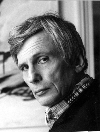What I’ve Been Reading Lately
Here’s a few of the literary essays that have crossed my path in recent days:
- James Parker fills Boston Globe readers in on a significant trend in British fantasy, wondering if American readers and filmgoers are rediscovering JRR Tolkien and CS Lewis as comfort in times of war, then connects Watership Down to The Jungle Book, only to pivot and suggest the power of Watership comes not from its pastorality but from its violence.
- Doug Seibold’s latest commentary for The Book Standard takes on the pernicious influence of bullcrit—″what you produce when you feel the need to give the impression that you’ve read a book or seen a film or heard a band that you haven’t, though you’ve read or heard someone else’s opinion about it, and you either rip off that opinion or tweak it to whatever degree the situation requires of you at the time.” With so many books out there, he says, any meeting between a sales rep and a book buyer is bound to be full of it.
- Jennifer Howard’s Chronicle of Higher Education article about scribbling in the margins considers the academic import of those sidenotes, especially when they come from famous readers like Coleridge. Who knew that all those !s and !!s I’d been leaving in my review galleys might actually be appreciated by future generations?
Finally, an article I didn’t read—but only because I’d written it. For those who might have been curious about last month’s overview of the New Age market, but don’t have subscriptions to Publishers Weekly, the producers of What the Bleep Do We Know have put the article up for free viewing.
19 October 2005 | uncategorized |
Jerome Charyn’s Isaac Babel Shortlist
 Jerome Charyn has long been one of my favorite novelists, and when I found out that he’d just published a biography of Isaac Babel—Savage Shorthand—I wondered if he might have some recommendations for readers who, like me, aren’t yet familiar with Babel’s stories. He very kindly sent the following note:
Jerome Charyn has long been one of my favorite novelists, and when I found out that he’d just published a biography of Isaac Babel—Savage Shorthand—I wondered if he might have some recommendations for readers who, like me, aren’t yet familiar with Babel’s stories. He very kindly sent the following note:
“Babel’s ‘Guy de Maupassant’ is my favorite story in the whole world; it’s funny and sad, and it’s the most telling story ever written about language and all its tricks and traps.
“My next best favorite is ‘The King,’ about the Odessa gangster Benya Krik and his magical orange pants.
“Readers should also look at ‘Di Grasso,’ a story about the mysteries and sometimes sordid magic of art.
“I would then suggest a look at Babel’s 1920 Diary, which is his own portrait of the artist as a young man, an artist under enemy fire.
“Now the reader is ready to look at Red Cavalry and its curious ride through Poland, with all the savagery and bump-bump of the human heart.
“And lastly, the reader should look at ‘Benya Krik,’ Babel’s screenplay about Benya, but from the point of view of a Soviet writer who has to wind his way through Soviet politics, which has already become a deadly maze.”
Charyn has also recently edited Inside the Hornet’s Head, which starts with his love for Saul Bellow’s Adventures of Augie March and goes on to include eightteen other great Jewish-American writers, ranging from Isaac Bashevis Singer to Leonard Cohen.
18 October 2005 | guest authors |

 Our Endless and Proper Work is my new book with Belt Publishing about starting (and sticking to) a productive writing practice.
Our Endless and Proper Work is my new book with Belt Publishing about starting (and sticking to) a productive writing practice. 
